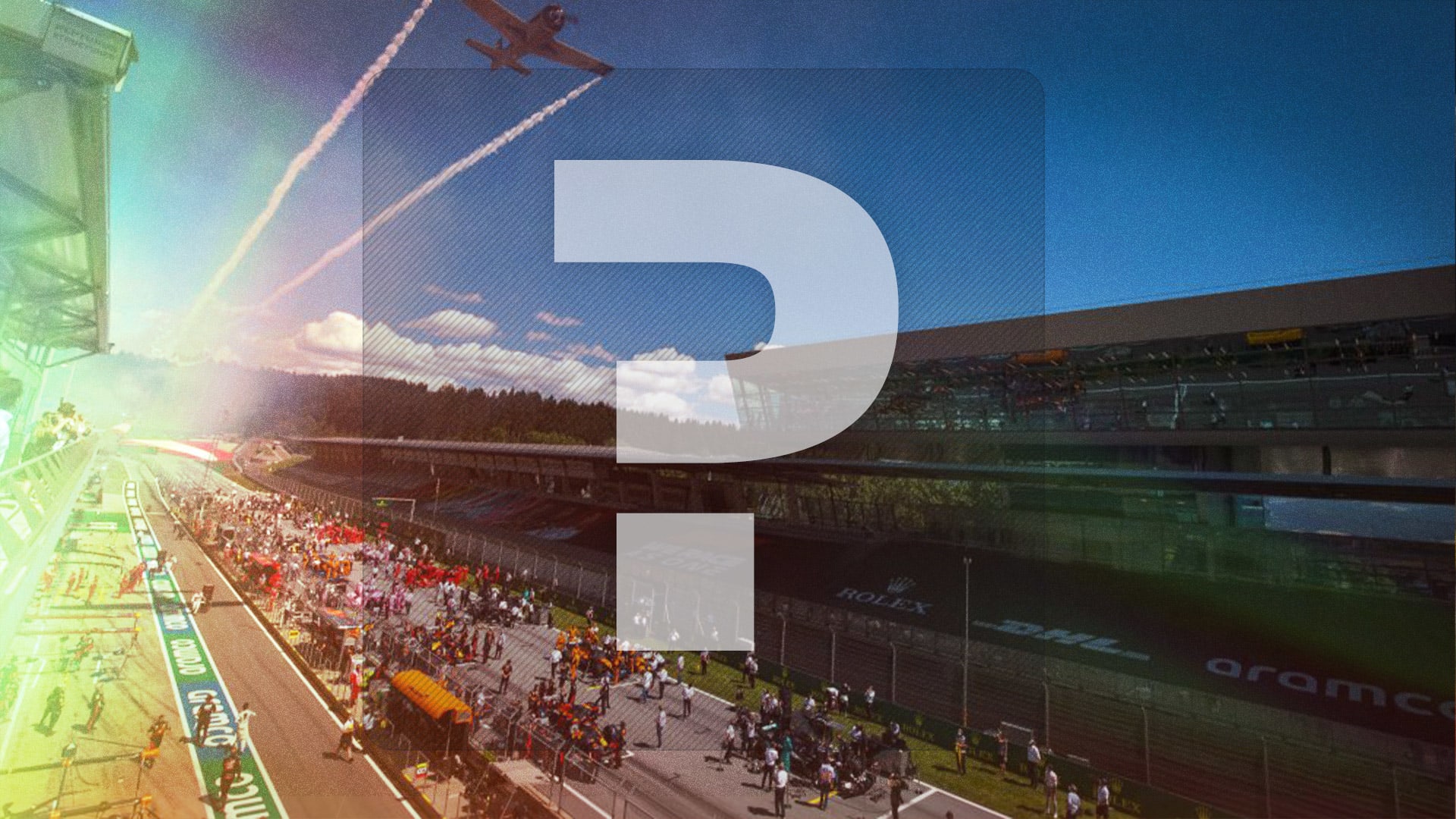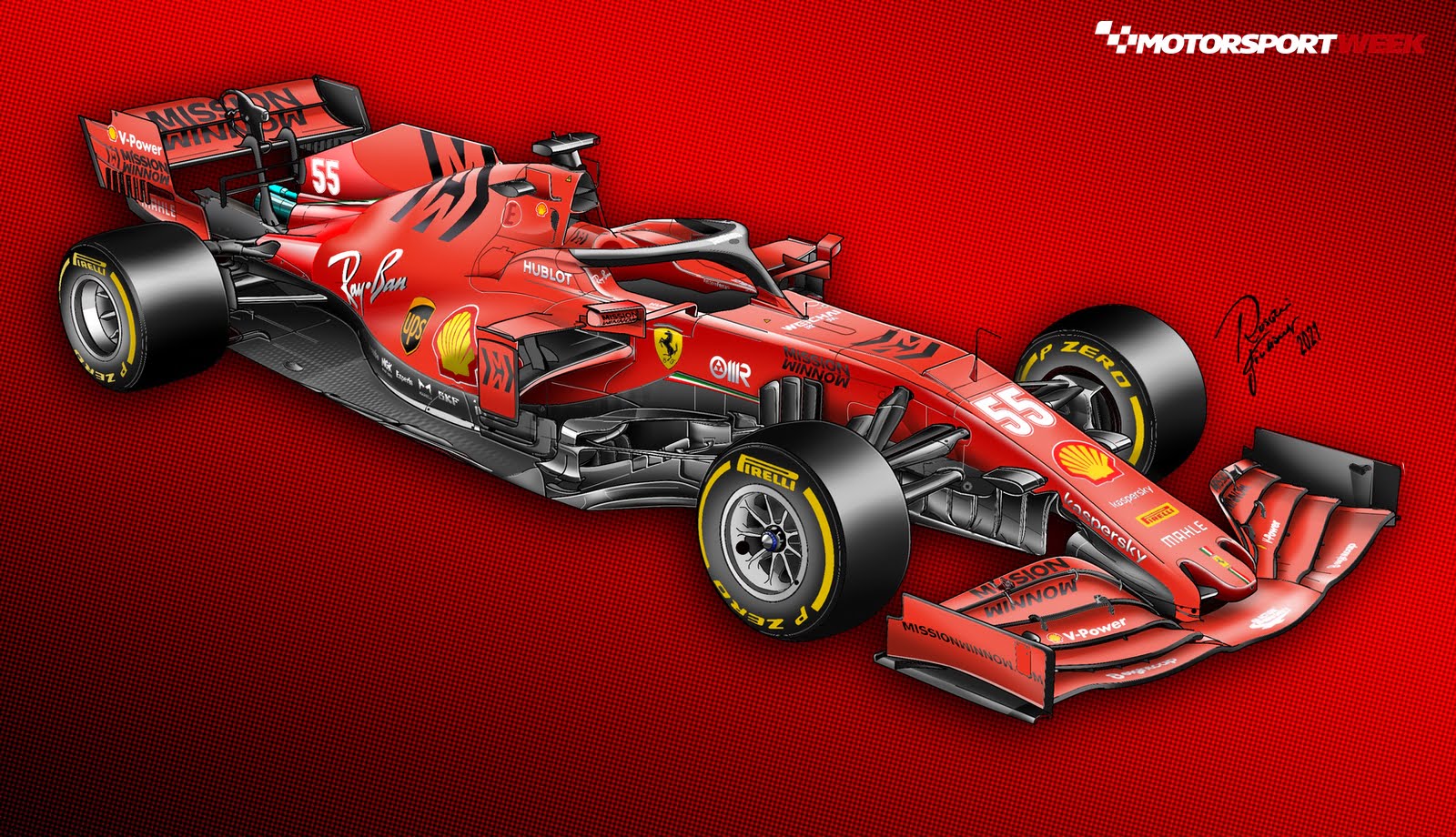Home Single Seater Formula 1
Scuderia Ferrari, fresh from its dismal 2020 Formula 1 campaign, has been working on turning its fortunes around for several months.
There are many rumours about the car that Ferrari will bring to the track this year. There are also many doubts about whether they can really make a comeback in a season that will see very few regulatory changes, with very limited development allowed.
The name of the new car from Maranello, the SF21, is one of the few certainties that we currently know. Due to the regulations implemented by the FIA in the technical/sporting field, with the various freezes of some of the most important components of a car, the SF21 will inherit a good part of the old SF1000 of 2020. Obviously this will not help to cancel out all the performance problems the team suffered from last year, therefore if they can deliver consistent podiums in '21, it can be considered a great result obtained by the Scuderia technicians.
Despite the development freeze, other parts of the car, such as aerodynamics and Power Unit, leave more freedom for the engineers led by Mattia Binotto and David Sanchez (chief engineer) to regain some level of competitiveness. Above all, Ferrari will be looking to the new Power Unit, the real weak point of the old car, to deliver a major performance step.
Outside of the two development tokens, the main focus of development will of course be on the floor, diffuser and rear brake sockets, with the FIA imposing changes in these areas to reduce the mechanical stress on the Pirelli tyres in a bid to avoid further repeats of the British GP, where three cars suffered failures.
It is therefore legitimate to ask what the changes implemented on the new Ferrari could be, where the two tokens granted will be spent, and what to expect from the new Power Unit 065/2.
The Ferrari SF21 will certainly be very similar to the old SF1000, due to the various freezes. With stable regulations we often see parts being shared between seasons, but in 2021, even more than in previous years, we will essentially see a direct evolution of the old 2020 single-seater. It could be defined as an "SF1000 version B", or "SF1000 2.0."
With cars inherited directly from those of the previous season, it is clear that an upheaval in the pecking order is unlikely. However, thanks to its human and economic resources, Ferrari will have a better chance of catching up than direct competitors such as Aston Martin, McLaren and Renault, which in development tend to be somewhat limited in the improvement curve of their cars.
[h4][/h4]
Ferrari knows the weaknesses of its SF1000 and therefore knows where it needs to spend its tokens. It's more than likely it will concern the modification of one or more homologated parts from last season, which the Ferrari technicians may decide to modify for 2021, by spending the required tokens.
The components forming part of the so-called HC (Homologated Components) are purely mechanical in nature, and are mainly: the frame, the cooling system, the braking system, the gearbox, internal suspension parts, and the impact structures.
Almost certainly the tokens granted will be spent by Ferrari to homologate parts of the SF21 already at its debut, and not wait for some Grand Prix of the future season to identify the development area.
Insider knowledge from Maranello strongly suggests that Ferrari has planned the homologation of a new gearbox, which requires the expense of both tokens for the approval of the FIA technicians. A new gearbox could also help revise the rear suspension attachments (as long as you don't change the bars, springs and other internal parts), reducing the overall dimensions of the rear.
The aim of the engineers is to review the aerodynamics at the rear, which were very unstable last season, with a tendency to stall, which created many problems for the drivers on the SF1000. Moving back the suspension triangle, as done by Mercedes and Red Bull to recreate a sort of double diffuser with the lower arm fairing, could be an important starting point.
The expense of both tokens to revise the rear will not allow Ferrari to adopt the much coveted Mercedes-style narrow nose on the SF21. The implementation of a narrow nose (copied by McLaren, Renault and Red Bull), and which is now the new "fashion" for engineers to manage the air flows at the front, requires the modification of the frontal impact structure, approved in September 2020.
The front impact crash structure (FICS), which is housed right inside the nose that wraps it like a sort of casing, was designed to house the wide "old school" nose of the SF1000. Consequently, it is not suitable for the implementation of a Mercedes-style front.
Last year Ferrari looked like they tried to homologate a narrow nose by the last useful date in mid-September 2020, however it likely failed to pass the crash test, or didn't receive positive feedback from the CFD simulations and was therefore not further developed.
An important development for this season will be how teams interpret the new aerodynamic constraints that will limit the downforce in the rear area of the car. The FIA has dictated new technical guidelines to safeguard the integrity of the Pirelli tyres, which will force the engineers to cut a portion of the floor diagonally. This will substantially reduce the aerodynamic seal effect that the engineers were looking for on the 2020 single-seaters, to energise the diffuser and reduce the induced aerodynamic drag.
To this must be added the reduction in the dimensions of the fins inside the diffuser and the cantilevered winglets from the brake ducts. The aim of the FIA is to limit the overall aerodynamics of the 2021 cars by 10 per cent compared to 2020, to which is also added an increase in the minimum weight at the technical checks.
During the 2020 season finale, Ferrari was very active in this regard, and has already tested various pre-configurations of these aerodynamic parts, adapting them to the 2020 car. Two different floor solutions were tested between Portimao and Abu Dhabi, with the latest version seen in the free practice of the final race of 2020.
A lot of work was also carried out in the Young Driver Test, where data collections were carried out with the floor, diffuser, and brake ducts in view of 2021, by mounting the famous "rakes" on the rear. These are the same ones used in free practice in Yas Marina, with the pitot tubes collecting data on the flow trends with the aerodynamic modifications to the rear.
It will be very important to compensate for the loss of aerodynamic load at the rear whilst also rebalancing the front axle, otherwise the cars could become very unstable.
Reducing the drag shown by the SF1000 is another important focus of the Maranello engineers, who will have to take a step back to 2019, returning to the aerodynamic efficiency levels of the SF90 which was often quickest in the speed traps – the opposite of last year!
The real technical revolution for the Ferrari SF21 should come from the redesign of the Power Unit, which has been on the test bench since early November. The redesign concerns both the endothermic part and the Energy Store, with particular attention on the discharges: By regulation, the endothermic part will see the lifting of the obligation to use the wastegate. This will allow teams to have more freedom in the design of the turbine, and in the management of exhaust gases.
The part on which the work of the engineers has mainly focused concerns the injection system and the management of fuel in the combustion chamber: The secret agreement signed last year between Ferrari and FIA, which led to substantial regulatory adaptations of its own Power Unit, caused the Italian team to lose the supremacy it held in 2019.
The implementation of the double flow meter, and the limitations in the use of additive oils, cancelled the strengths of the Ferrari engine compared to rivals, which was felt at its customer teams Haas and Alfa Romeo too. The FIA, with the obligation of a single mapping for qualifying and the race, and the limitations in the quantity of oils for 2021, is an attempt to level the performances among the various engines, canceling above all the excessive Mercedes power shown last season – albeit to little effect.
Therefore there are some prerequisites for Ferrari to be able to put a much better Power Unit into practice on the track in 2021. The 065/2 Power Unit looks promising, and is already ready to provide 30 additional horsepower than the last specification used in 2020, though its rivals are also not sleeping.
To support the strength of the new Ferrari engine, team principal Mattia Binotto has said he would be open to an engine development freeze at the end of the year – not something a team boss would agree to if the numbers didn't look positive!
To close the gap from the Mercedes Power Unit, however, it will take more than a single winter of work and some tweaks to the technical regulations.
Scuderia Ferrari, fresh from its dismal 2020 Formula 1 campaign, has been working on turning its fortunes around for several

www.motorsportweek.com












